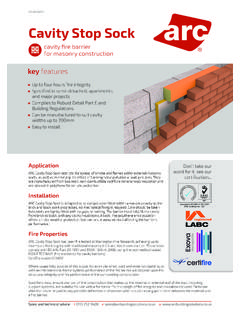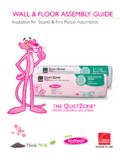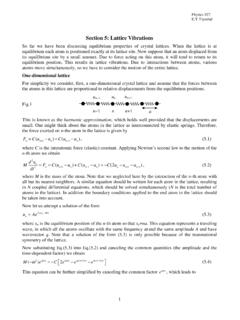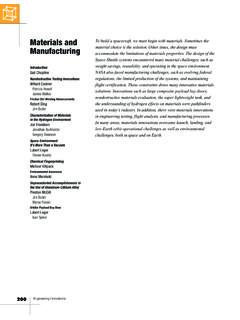Transcription of Precast Concrete Solutions - Yorkshire | London
1 Concrete GROUP. Precast Concrete Solutions BEAM & BLOCK FLOORS HOLLOWCORE FLOORS Precast Concrete STAIRCASES. WAT E R C H A M B E R S R E TA I N I N G WA L L S O L U T I O N S R E S E R V O I R WA L L. Company History Concrete GROUP. Founded in 1947 by Charles Longley, initially producing blocks and lintels on a local basis, the Longley Concrete Group incorporating Longley Concrete Floors and Whites Concrete has developed over 60 years into a leading Mr. Charles Longley (right) and active works circa 1950. supplier of Precast Concrete products. Continued and ongoing investment in the company's plant, infrastructure and product development means it is now well placed to meet the demands of the construction industry today. Index The Building Regulations 1-2.
2 Traditional Beam & Block 3-4. TETRiS 5-6. Beamshield Plus 7-8. Beam & Block Upper Floor Solutions 9 - 10. Hollowcore Floor Solutions 11 - 12. Precast Concrete Storage Solutions 13 - 14. Precast Concrete Staircase & Landings 15. Precast Concrete Solutions For further design information visit or or call 01924 464283. The Building Regulations 2000. Approved Document A. A3: Disproportionate collapse - Edition 2004 Structure The building shall be constructed so that in the event of an accident the building will not suffer collapse to an extent disproportionate to the cause.. The current Approved Document A, for England and Wales was published in June 2004 and came into effect from December 2004. The overall objective of the The guidance deals with the means of reducing the sensitivity of a building to changes are to improve the standards of safety for persons in or about buildings.
3 It disproportionate collapse in the event of an accident. The structures are divided also gives guidance on loading and ground movement. into categories depending on the risk factor and the consequences of an accidental failure. One of the changes in the current document is the removal of the application limit to requirement A3. Buildings of less than 5 storeys are now included with benefit These parameters depend on the type of the building, the likelihood of accidents to public safety. The guidance given in the document gives clear advise on the and the number of people that may be affected. These are categorised by measures which may be taken to meet the requirement. consequence class as shown in Table 1. Table 1: Building classes (based upon Approved Document A, 2004 Edition, Table 11).
4 Class Building type and occupancy Action required 1 Houses not exceeding 4 storeys. Agricultural buildings. No additional Buildings into which people rarely go, provided no part of the building is closer to another measures building, or area where people go, than a distance of times the building height. 2A 5 storey single occupancy houses. Hotels not exceeding 4 storeys. Flats, apartments and other residential buildings not exceeding 4 storeys. Horizontal ties Offices not exceeding 4 storeys. to be provided Industrial buildings not exceeding 3 storeys. or effective Retailing premises not exceeding 3 storeys of less than 2000m2 floor area in each storey. anchorage Single storey educational buildings. of floors to supports All buildings not exceeding 2 storeys to which members of the public are admitted and which contain floor areas exceeding 2000m2 at each storey 2B Hotels, flats, apartments and other residential buildings greater than 4 storeys but not exceeding 15 storeys.
5 Educational buildings greater than 1 storey but not exceeding 15 storeys. Horizontal ties to be Retailing premises greater than 3 storeys but not exceeding 15 storeys. provided together Hospitals not exceeding 3 storeys. with either vertical Offices greater than 4 storeys but not exceeding 15 storeys. ties or allowance All buildings to which members of the public are admitted and which contain floor areas exceeding 2000m2 made for notional but less than 5000m2 at each storey. removal of supports Car parking not exceeding 6 storeys. 3 All buildings defined above as Class 2A and 2B that exceed the limits on area and/or number of storeys. Specific consideration Grandstands accommodating more than 5000 spectators. to take account of the All buildings, containing hazardous substances and/or processes.
6 Likely hazard. NOTE 1: For buildings intended for more than one type of use the Class should be that pertaining to the most onerous type. NOTE 2: In determining the number of storeys in a building, basement storeys may be excluded provided such basement storeys fulfil the robustness requirements of Class 2B building Approved Document E - 2003 Edition Resistance to the passage of sound E1 Protection against sound from other parts of the Methods of Compliance building and adjoining buildings There are two methods of compliance: It is now a requirement for separating floors to achieve specific values of sound Pre-Completion Testing (PCT). insulation in new and converted residential buildings, including rooms for This method requires the contractor to test 1:10 units adopting each specific residential purposes' such as hotels and residential care homes.
7 Construction to demonstrate that the required levels of sound insulation are Performance Requirements achieved. All tests must be carried out by an accredited acoustic engineer, with the structure needing to achieve the minimum prescribed acoustic values. New Build Change of Use Robust Detail Airborne DnT,w + Ctr 45dB 43dB As an alternative to PCT, contractors can select from a number of rigorously tested approved robust details that will, if installed correctly provide a level of Impact L'nT,w 62dB 64dB sound insulation in excess of those required by Part E, 2003 (in new build houses and flats only). 1. E2 Protection against sound within a dwelling-house E4 Acoustic Conditions in Schools Internal floors have to achieve a minimum airborne sound insulation standard.
8 The normal way of satisfying Requirement E4 is to meet the values for sound Performance Requirement insulation, reverberation time and indoor ambient noise which are given in New Build section 1 of Building Bulletin 93 The Acoustic Design of Schools' produced by DfES. Airborne Rw 40dB. Methods of Compliance Method of Compliance Longley Concrete Floors have a range of Solutions (both beam and block The contractor is to use constructions for new floors that provide the laboratory and hollowcore) capable of meeting the performance requirements of sound insulation values set out in the table above. It is not necessary that Building Bulletin 93. performance should be verified by testing on site. Laboratory tests where carried out by the Building Test Centre and the results are summarised below: Floor Type Floor Weight (kg/m2) Sand/cement Screed (mm) Ceiling Rw(db).
9 Gaps filled and Single layer plasterboard ( ) fixed Beam and Block 186 - 40. to 50 x 50 timber battens at Single layer plasterboard ( ) fixed to 50 x 50 timber Beam and Block 186 40 49. battens at c/c Hollowcore 236 - - 53. Approved Document L - Edition 2006 The TER is arrived by reducing the notional buildings CO2 emission rate by (ADL) Conservation of Fuel and Power 20% and making an allowance for any changes in the main heating fuel using the fuel factor (Table 2). Objectives of Part L. Approved Document L 2006 sets out to make buildings more energy efficient, with Table 2 Heating Fuel Fuel Factor an aim to reduce carbon production by one million tons per year. Fuel Factor Mains gas Methods of compliance Solid multi-fuel The new ADL offers only one method of compliance, based on the whole building Renewable energy energy performance approach.
10 All new buildings MUST now achieve a minimum LPG CO2 emissions rate based on the following methodologies: Oil ADL1A - SAP 2005 (SAP worksheet and specification can be downloaded Solid mineral fuel from Grid electricity (for direct acting storage and electric heating pumps) ADL2A - NCM /SBEM (Simplified Building Energy Model). Further information can be downloaded from The SAP calculation is then repeated but this time inserting the proposed fuels, New dwellings - Demonstrating compliance building services, U-values and low or zero carbon energy sources for the proposed Compliance with L1A is demonstrated by meeting five criteria: dwelling. This produces the Dwelling Carbon Rate (DER). If the DER is less than the 1. The Dwelling Emission Rate (DER) is no greater than the Target CO2 TER the first set of criteria has been achieved.)






